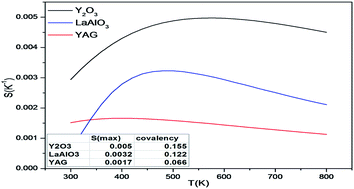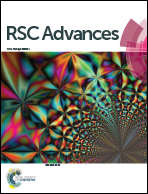Investigation into the temperature sensing behavior of Yb3+ sensitized Er3+ doped Y2O3, YAG and LaAlO3 phosphors†
Abstract
The optical temperature sensors based on Y2O3 (YAG/LaAlO3):Yb3+/Er3+ have been successfully prepared by the sol–gel method. The sensing behavior of samples was studied as a function of temperature in the range 298–573 K for optical temperature measurement. The maximum sensor sensitivity derived from the ratio of fluorescence intensity (R) of the green upconversion (UC) emissions was approximately 0.0050 K−1 (Y2O3). The influence of the different structures and bonding of the hosts on the temperature sensitivities of Er3+/Yb3+ co-doped Y2O3, YAG and LaAlO3 was investigated in detail based on chemical bond theory. The calculated results could provide certain guiding significance for other relevant temperature sensing materials.

- This article is part of the themed collection: RSC Advances Editors' collection: f Block Chemistry

 Please wait while we load your content...
Please wait while we load your content...